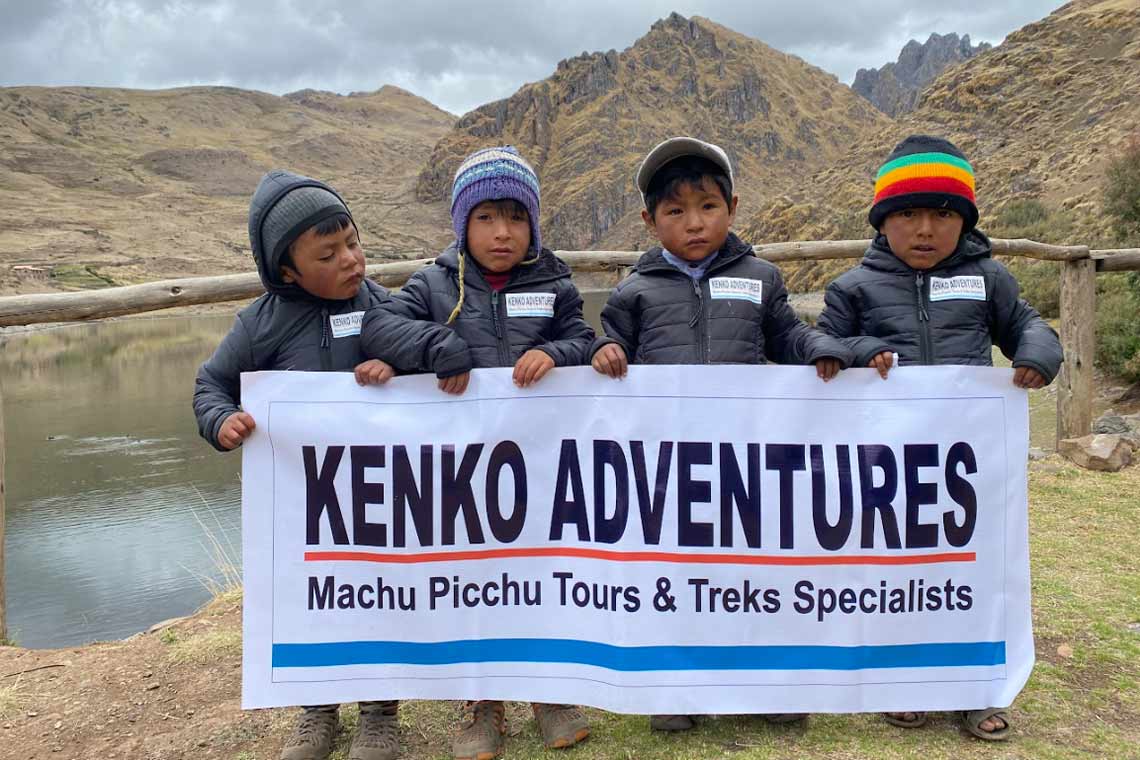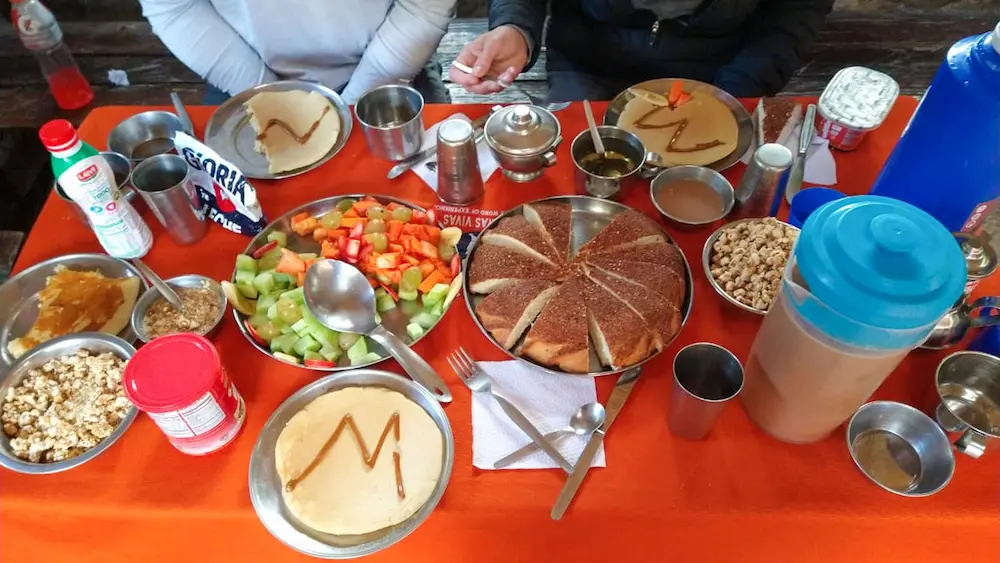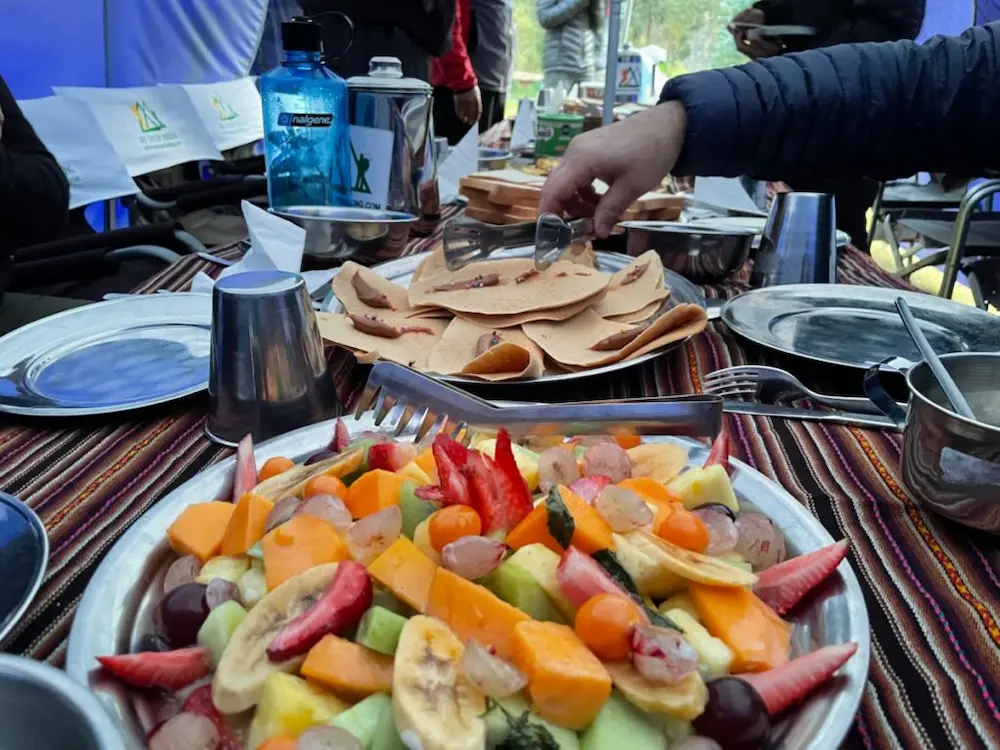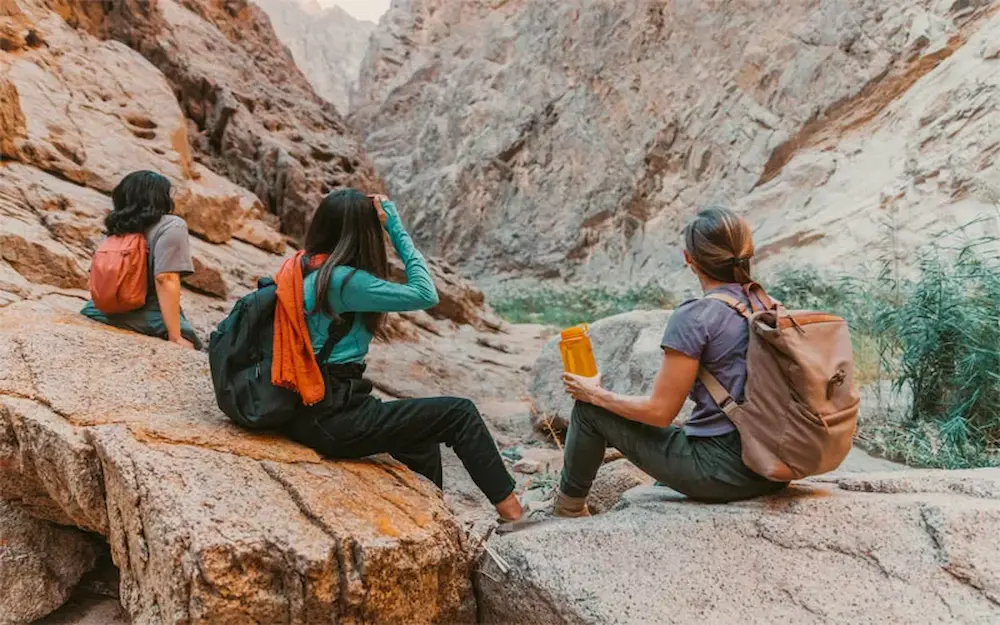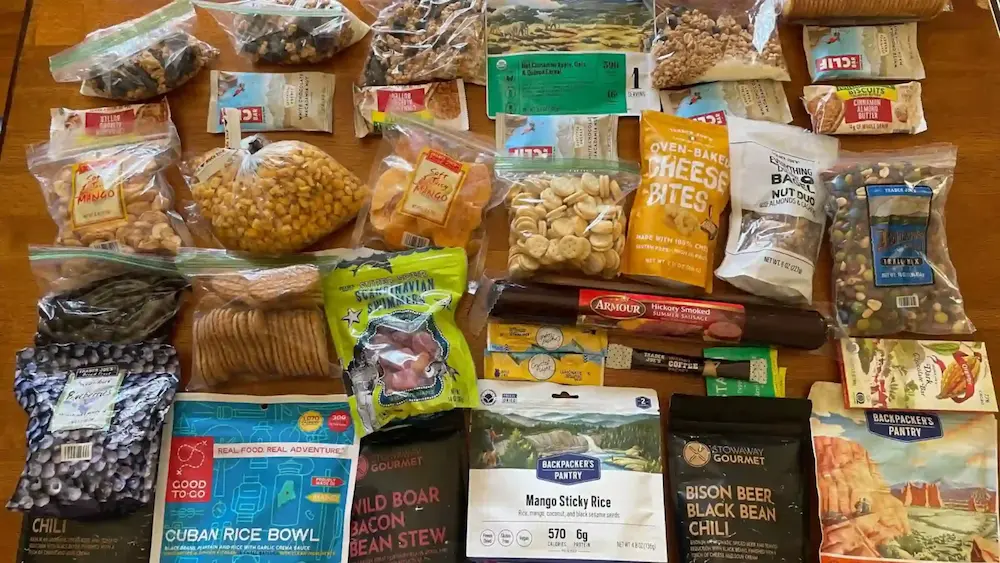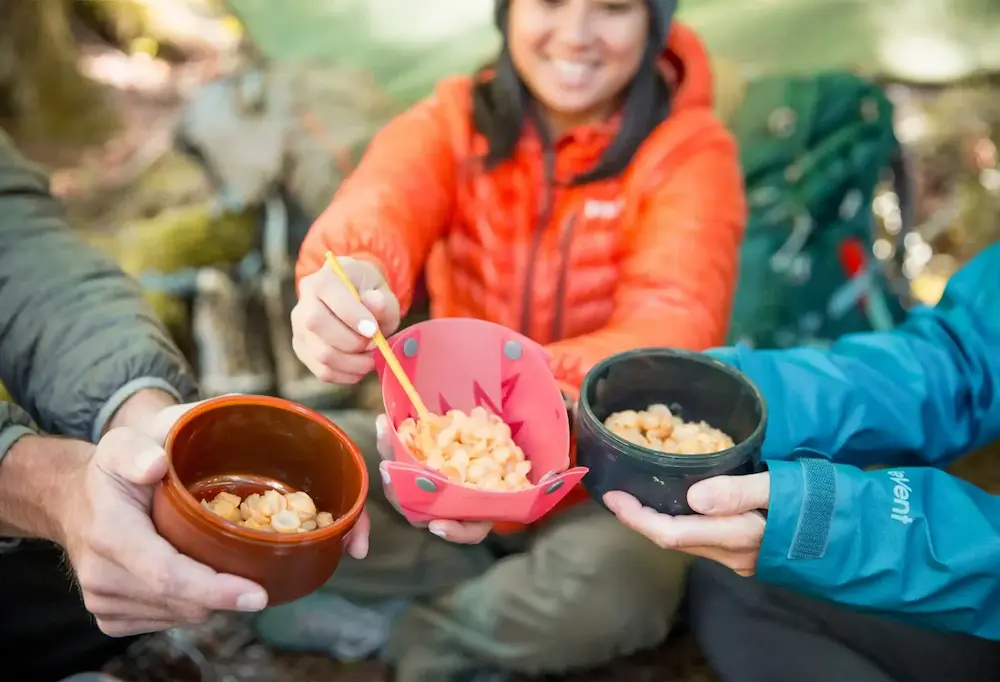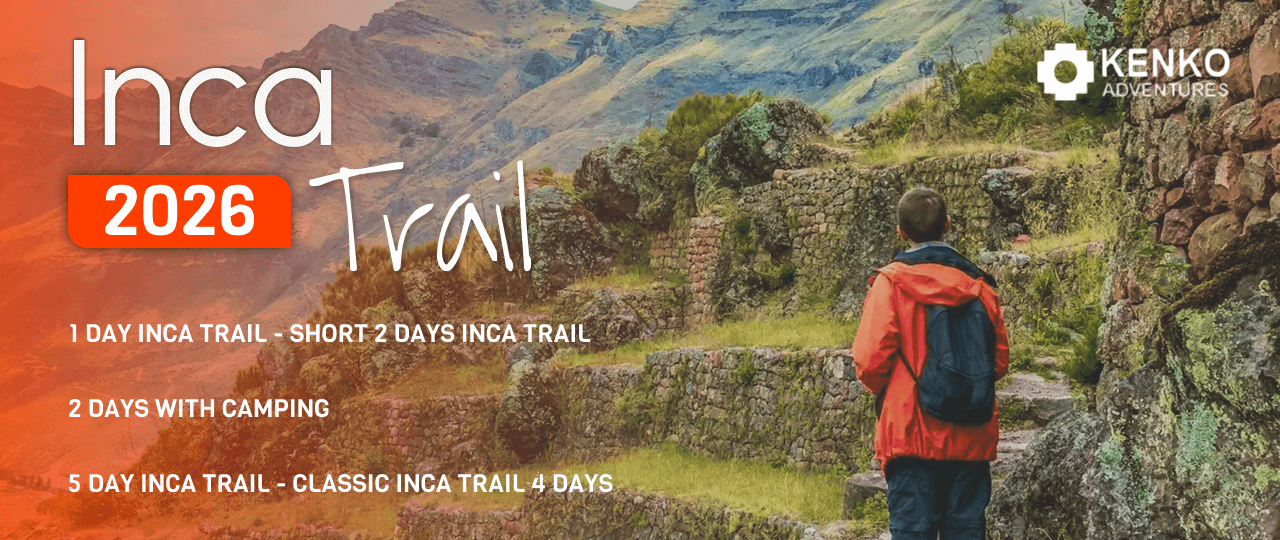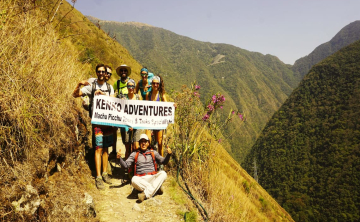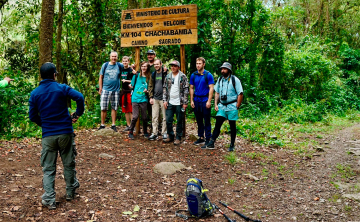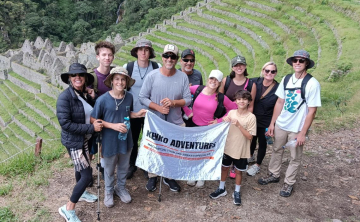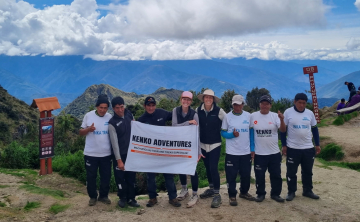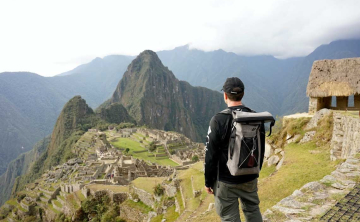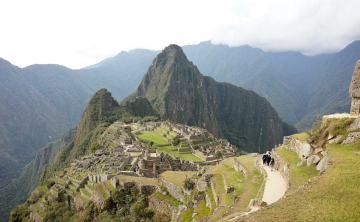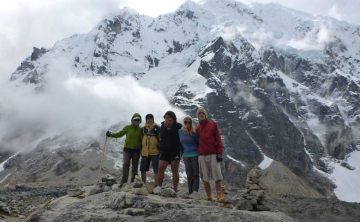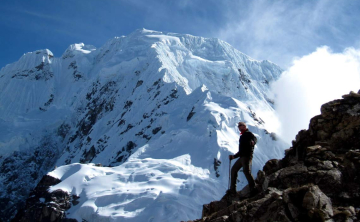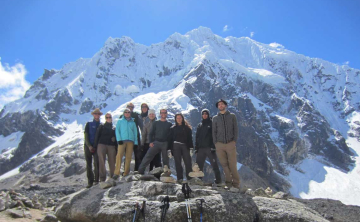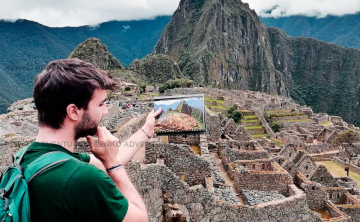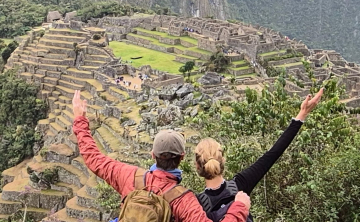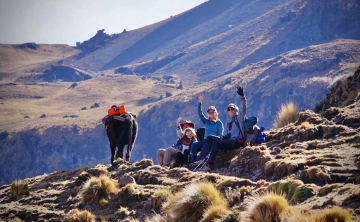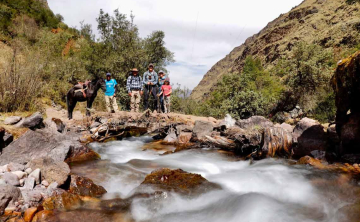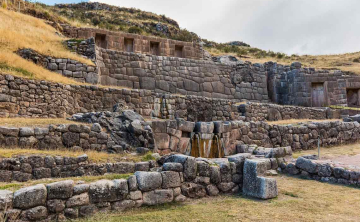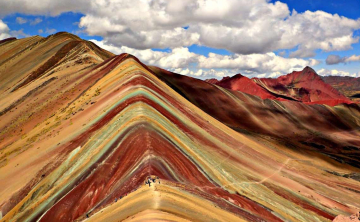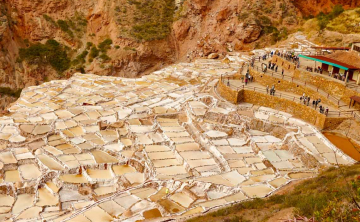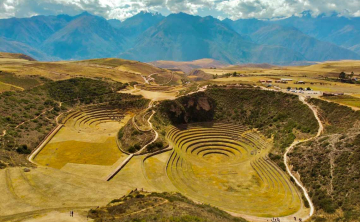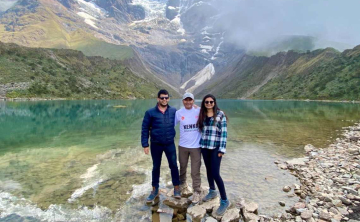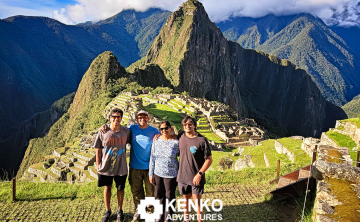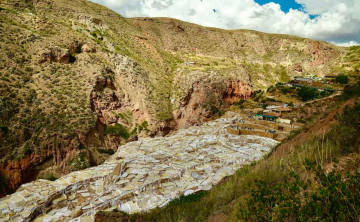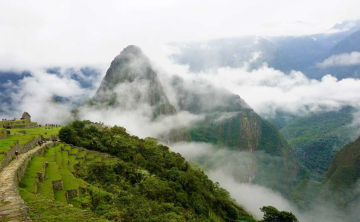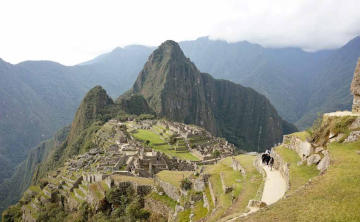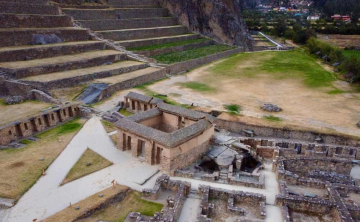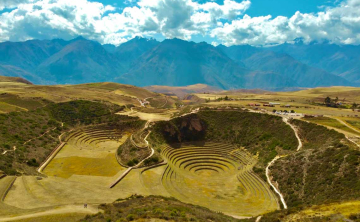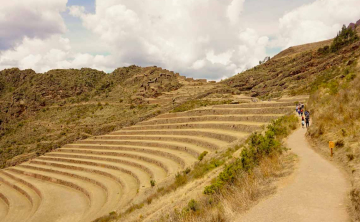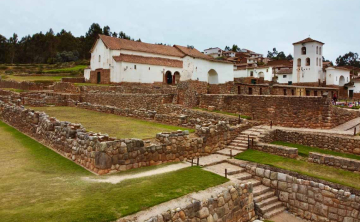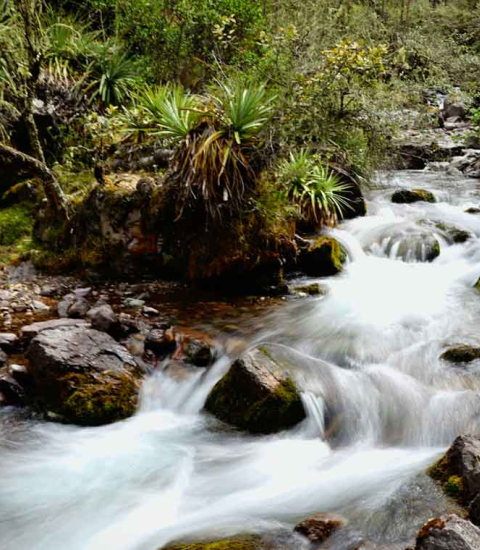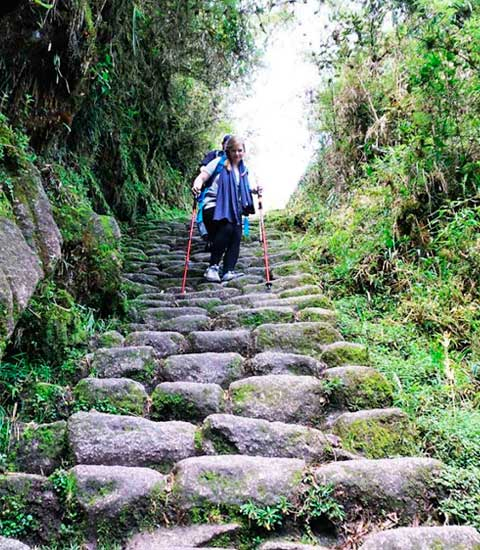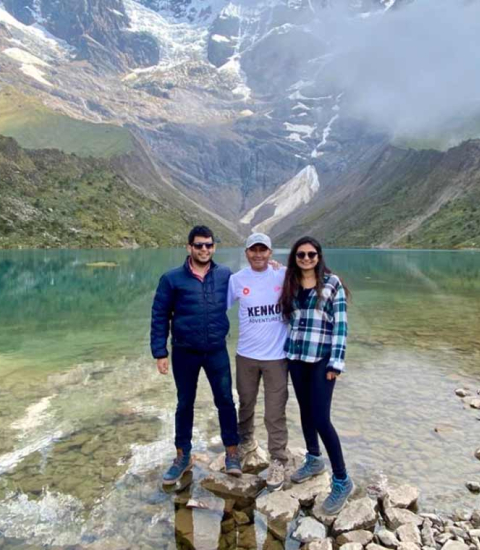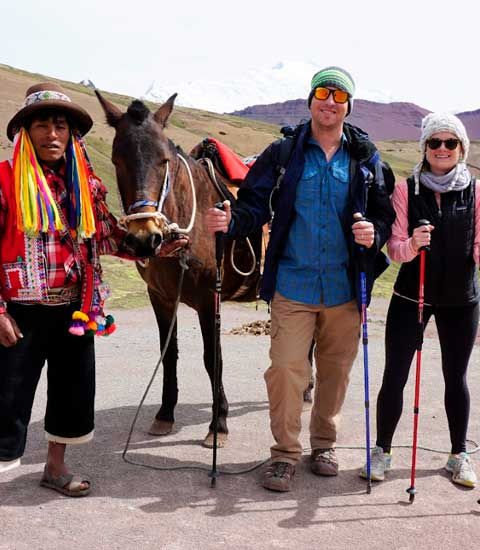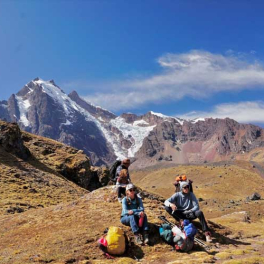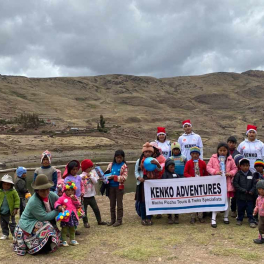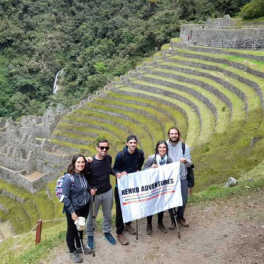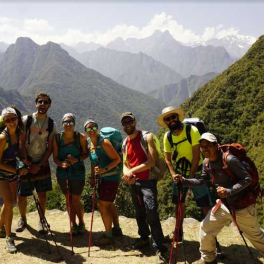We present our real culture life to our clients, hiring people from villages and communities of our region.
- Blog
- The Best Snacks While Hiking In Peru
The best snacks while hiking in Peru
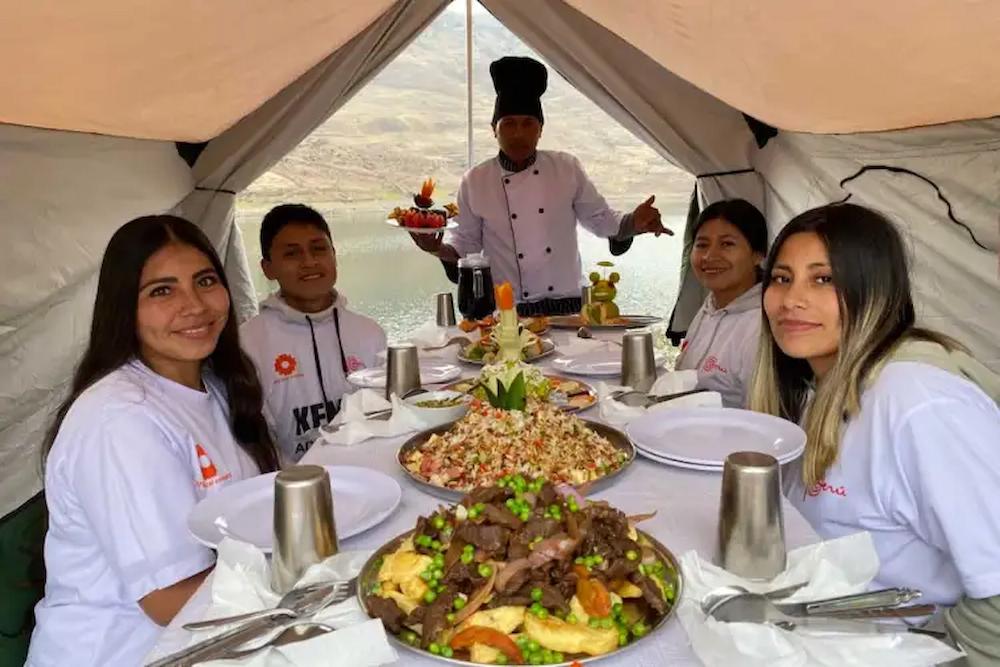
As experts in trekking, we are aware of how taxing the trails can be, particularly if you are not accustomed to lengthy climbs or have not adequately refueled in the days prior to your journey. In order to keep you hydrated, energized, and strong till the very end of your adventure, we've included the finest foods to eat while hiking in this comprehensive guide on what to eat before and throughout your trek. And what do you know? We want to make sure you know which foods are best for hiking so your body can have the best chance of surviving those days on the trail. Peru offers some of the most natural, nutrient-packed superfoods, and this guide to the best snacks while hiking in Peru will help you discover which local options truly keep your energy high and your experience authentic.
Why choosing the right snacks matters when hiking
Before starting any hike, especially in a country as diverse as Peru, it’s important to understand how food influences your performance. The right snacks help your body handle long distances, altitude, and changing temperatures. Choosing wisely means you’ll have consistent energy, better focus, and a more enjoyable experience overall.
Energy and endurance in high-altitude hikes
Hiking in Peru means facing high altitudes, steep climbs, and unpredictable weather. Your body burns a lot of calories to keep up, especially above 3,000 meters. That’s why the best snacks while hiking are those rich in carbohydrates and proteins — they provide quick energy and help your muscles recover faster. Energy-dense snacks such as nuts, quinoa bars, or dried fruits are perfect to fuel your body without weighing down your backpack.
Moreover, eating small portions frequently helps you maintain consistent energy levels throughout the day. This prevents fatigue and ensures you can fully enjoy the stunning landscapes without feeling drained halfway through the hike.
The role of hydration and balanced nutrition
Hydration is just as important as food when hiking. Dehydration can cause headaches and altitude sickness to worsen. While water should always be your main source of hydration, adding electrolyte drinks or natural juices can replace the salts lost through sweat.
In addition, balance is key. Combining carbohydrates for energy, proteins for recovery, and fats for endurance keeps your body strong and focused. The best snacks while hiking in Peru should also include local options like coca candies or kiwicha bites — not only are they natural, but they also help your body adapt to altitude and maintain stamina.
The best snacks while hiking in Peru
When it comes to hiking in Peru, your snack choices can make your journey more enjoyable and efficient. The best snacks while hiking are those that provide sustained energy, are easy to carry, and reflect local flavors. From Andean superfoods to simple trail mixes, here’s a guide to what to pack for your adventure.
Dried fruits and Andean nuts
Dried fruits like raisins, mango, and papaya, mixed with local nuts such as Brazil nuts or pecans, are excellent for quick energy. They’re lightweight, non-perishable, and full of natural sugars that your body can use immediately during a hike.
Andean nuts are rich in healthy fats and proteins, providing slow-burning energy that lasts for hours. This makes them ideal for long treks like the Inca Trail or Ausangate, where energy management is crucial. Keep them in resealable bags for easy access during rest breaks.
Quinoa bars and kiwicha bites
Quinoa and kiwicha are ancient superfoods from the Andes, known for their high protein and amino acid content. Many Peruvian brands make energy bars from these grains, often mixed with honey, nuts, and cocoa for extra flavor.
These bars are perfect for hikers because they’re compact, nutritious, and delicious. They also digest easily, avoiding that heavy feeling that other processed snacks can cause. Bringing a few quinoa bars is one of the smartest ways to ensure you’re eating the best snacks while hiking in Peru.
Coca leaf candies for altitude
The coca leaf has been used by Andean people for centuries to combat altitude sickness. Today, coca candies and teas are popular and easy to find in local markets. They help relieve dizziness, headaches, and shortness of breath during steep climbs.
Including coca candies in your hiking pack is a simple way to stay comfortable while your body adjusts to the elevation. They’re small, lightweight, and have a mild herbal taste that keeps your mouth fresh during the hike.
Plantain chips and sweet potatoes
If you prefer something savory, Peruvian plantain chips and sweet potato crisps are an excellent choice. They’re rich in potassium, which helps prevent muscle cramps, and they offer that satisfying crunch that keeps your mood up during tough sections of the trail.
Unlike heavy snacks, these chips are light and last for days without losing flavor. Many local stores sell natural, lightly salted versions, making them one of the most accessible and best snacks while hiking.
Local chocolate and cacao nibs
Peru is one of the world’s top cacao producers, and its chocolate is known for being pure and rich in antioxidants. Carrying small bars of dark chocolate or cacao nibs gives you a quick energy boost and improves your mood when the trek gets tough.
Besides being tasty, dark chocolate helps improve blood circulation, which is beneficial at high altitudes. A few bites can go a long way, especially on long days of walking through mountain passes.
Sandwiches with avocado or cheese
If you want something more filling, simple sandwiches made with local bread, avocado, or Andean cheese are perfect. They provide healthy fats and natural salt, which help maintain hydration and energy.
You can prepare them the night before and wrap them in eco-friendly paper or containers. Just make sure to eat them within the first day of hiking to keep them fresh.
Electrolyte drinks and herbal infusions
While not technically “snacks,” drinks play a vital role in your hiking nutrition. Electrolyte powders or tablets dissolved in water can keep you hydrated and prevent fatigue.
Traditional Peruvian herbal teas like muña or coca also help digestion and ease altitude symptoms. Carrying a small thermos with one of these infusions is a comforting way to stay warm and energized during cold mornings in the Andes.
You might also want to check out: Christmas traditions in Peru
Local favorites: traditional Peruvian snacks for trekkers
Peruvian culture offers a wide variety of traditional foods that hikers have enjoyed for centuries. These snacks aren’t just tasty — they’re deeply connected to the country’s heritage and made with ingredients grown in the Andes. Incorporating local options into your hike supports small producers and lets you experience authentic Peruvian flavors.
Trying local snacks isn’t just about fueling your body — it’s about connecting with Peru’s heritage. Many of these foods are handmade by small producers using ancient techniques and Andean ingredients grown at high altitudes. By including them in your pack, you’re not only eating well but also supporting local families and preserving centuries-old culinary traditions. If you’re planning your trek with a trusted Peru tour operator, they’ll likely introduce you to some of these regional delicacies, ensuring your hiking experience feels both nourishing and cultural.
Pan chuta from Cusco
Pan chuta is a sweet, round bread typical from Oropesa, near Cusco. It’s slightly sweet, firm, and lasts for days without going stale — perfect for multi-day treks.
Locals often enjoy it with cheese or jam during breaks on the trail. If you pass through Cusco before your hike, make sure to buy a few pieces; they’re one of the most traditional and best snacks while hiking in the Andes.
Tarwi beans and cancha serrana
Tarwi is a legume high in protein and healthy fats, often sold roasted and salted like peanuts. Cancha serrana, or toasted corn, is another classic Andean snack that provides crunch and flavor.
These are local favorites for a reason: they’re affordable, full of nutrients, and deeply connected to Peruvian food culture. Carrying them means not only eating well but also supporting local farmers.
Queso fresco and corn snacks
Fresh Andean cheese (queso fresco) is often paired with boiled corn as a simple, nutritious snack. While it’s best eaten early in your hike to avoid spoilage, it’s a local tradition that adds authenticity to your trip.
If you’re hiking shorter routes or doing day trips, packing some cheese and corn can make your rest stops feel more cultural and satisfying.
Sweet treats and natural energy from the Andes
Beyond the savory options, Peruvian hikers also enjoy natural sweets like honey candies, chancaca (solid molasses), or even coca and muña-infused treats. These provide quick glucose boosts while helping with digestion and altitude adaptation. Honey and molasses are especially valued for their high mineral content, which supports muscle recovery and hydration.
Some small Andean towns also sell handmade cookies or energy bites made with quinoa, sesame, and maca — all native superfoods with exceptional nutritional profiles. These sweets are not overly processed, making them a healthier choice than typical candy bars. Plus, buying them directly from local stands helps sustain traditional recipes and small-scale producers who keep Peru’s culinary heritage alive.
Why local snacks matter for your hike
Choosing local Peruvian snacks for your trek is more than a practical decision — it’s a sustainable one. By opting for foods like pan chuta, cancha, or quinoa bars made by nearby communities, you reduce packaging waste and environmental impact. You also support small economies in the Andes, many of which depend on tourism and local agriculture.
And perhaps most importantly, eating locally allows you to connect with the land in a deeper way. The best snacks while hiking are those that tell a story — of ancient grains, mountain farmers, and centuries of tradition that have nourished people on these same trails long before they became world-famous.
You might also want to check out: What were the incas known for?
What snacks to avoid while hiking
Not all foods are suitable for outdoor adventures. Some snacks can spoil quickly or drain your energy instead of helping you recover. Knowing what to avoid is just as important as choosing the best snacks while hiking, especially when you’re far from any store or medical help.
Foods that spoil quickly
Avoid carrying perishable foods such as yogurt, meat, or dairy products unless you’re on a short one-day hike. These items can spoil fast in warm or sunny conditions, particularly on routes like the Inca Jungle or Colca Canyon, where there’s little shade and limited refrigeration. Once spoiled, they can cause digestive problems or food poisoning — a serious issue when you’re far from medical assistance.
Instead, choose dry, shelf-stable foods like nuts, granola, quinoa bars, or dried fruits. They’re safer, lighter, and just as satisfying. If you crave something savory, consider hard cheeses like Andean queso seco, which lasts longer than soft cheese and can handle heat better. Packing snacks that stay fresh at room temperature means less stress and more focus on enjoying the landscape.
Heavy or sugary snacks
It’s easy to think that candy bars or sweet pastries will give you the quick boost you need, but they can actually make your body crash faster. High-sugar snacks cause your blood sugar to spike, giving you a burst of energy that fades quickly — leaving you even more tired than before. This is especially problematic during long climbs or altitude hikes, where your body is already working harder to get oxygen.
Instead, go for natural sources of sweetness like dried mango, raisins, or Peruvian cacao nibs. These provide a slower, more stable energy release and contain vitamins and minerals that support endurance. Dark chocolate with a high cacao content (70% or more) is another great option; it’s packed with antioxidants and can improve blood circulation — perfect for long treks in the Andes. Remember: the best snacks while hiking are those that fuel your energy steadily, not the ones that give you a short-lived sugar rush.
Processed or salty options
Overly processed snacks such as instant noodles, chips, or heavily salted crackers might taste great at first, but they can cause dehydration — one of the most common issues hikers face at high altitudes. Excess sodium forces your body to lose water more quickly, which can lead to fatigue, headaches, and muscle cramps. This becomes especially risky in dry, high-elevation regions like Cusco or Arequipa, where the air is thinner and your body needs more hydration to function properly.
If you enjoy crunchy snacks, look for low-sodium or naturally seasoned versions. In Peru, many local markets sell artisanal plantain chips or roasted corn (cancha serrana) made with minimal salt and no preservatives. These alternatives are much healthier and help you stay hydrated longer. As a rule, always check ingredient labels — fewer additives usually mean better nutrition and less stress on your digestive system.
Greasy and fried foods
Another common mistake is packing greasy or fried foods like empanadas, sausages, or leftover fast food. These are heavy on the stomach and take longer to digest, making you feel sluggish during steep climbs. The combination of altitude and physical exertion can amplify this discomfort, leading to nausea or fatigue.
Try to stick to baked or roasted options instead. A small serving of oven-baked plantain chips or homemade granola can satisfy your cravings without overwhelming your digestive system. Remember, your goal is to move comfortably — and the best snacks while hiking are the ones that support your body, not slow it down.
Too much caffeine or energy drinks
While caffeine can give you a mental boost, overdoing it with energy drinks or multiple cups of coffee can backfire. These drinks often contain high sugar levels and stimulants that increase heart rate and dehydration. At high altitude, this combination can cause dizziness or increased fatigue once the effect wears off.
If you need an energy lift, opt for coca or muña tea — traditional Andean infusions that naturally enhance alertness and help with altitude adjustment. They’re caffeine-free, hydrating, and align perfectly with local hiking culture.
You might also want to check out: Inca calendar: Solar alignments at Machu Picchu
How to pack and store your hiking snacks
Packing your snacks properly is essential to keep them fresh, organized, and safe from contamination. The way you store your food affects its taste and longevity, especially in Peru’s diverse climates — from humid jungles to dry mountain air.
Keep your snacks dry and sealed
Moisture can ruin your snacks, especially in humid regions like the jungle. Use airtight containers or resealable bags to keep them fresh and lightweight.
Separating snacks by portion also helps you control how much you eat throughout the day, ensuring your energy lasts until the end of the hike.
Eco-friendly packaging tips for hikers
Peru’s national parks and trails follow strict environmental regulations, so it’s important to minimize waste. Reuse containers and avoid single-use plastics whenever possible.
Bring a small reusable bag for collecting your trash. Leaving no trace keeps the trails clean and preserves the beauty of nature for other hikers.
Final tips for enjoying your hike
A good hiking experience is about more than just reaching the destination — it’s about how you care for yourself along the way. Being prepared with the best snacks while hiking allows you to stay strong, positive, and present throughout the journey.
Plan your meals according to trail length
If your hike lasts several days, plan snacks for each stage — lighter ones for climbs and more filling ones for rest periods. This ensures you’re never running low on energy. Think ahead about resupply points or local markets where you can restock traditional Peruvian snacks before entering remote areas.
Support local vendors during your trek
Buying snacks from local farmers and markets not only helps the community but also gives you a taste of authentic Peruvian flavors. Whether it’s coca candies, quinoa bars, or handmade bread, these small purchases make your adventure more meaningful and sustainable.
You might also want to check out: 20 fascinating facts about Inca Culture
A taste of Peru to keep you going
At the end of each route, one thing becomes clear: the journey is as much about discovery as it is about nourishment. The best snacks while hiking in Peru capture life at its most vibrant, natural, and authentic — keeping your body strong and your spirit connected to the mountains. Every handful of nuts, coca candy, and quinoa bar carries the essence of the Andes, blending ancient tradition with modern adventure.
As a result, before your next vacation, carefully consider how you will pack. Choose snacks that will improve your mood and fuel your body. Allow Peruvian delicacies to follow you on every mountain pass and woodland road since the best travel experiences are those that leave your heart and legs full.
Why Kenko Adventures?
We offer unique services like: hot shower and private toilets on treks. We have a real responsibility taking care of our planet.
Experts on: Inca Trail hikes and Machu Picchu Hiking Tours. We operate small groups.
Superior Quality services and full flexibility for any changes in this pandemic
Free warm jacket for my litle friend!
Kenko Adventure Peru founder decided to add a social proyect in all Our tours that means, if you are booking a tour with Us, you automatically are donating a warm jacket for Our litle kids that have very hard living in very cold conditions near by the Andes Mountain
